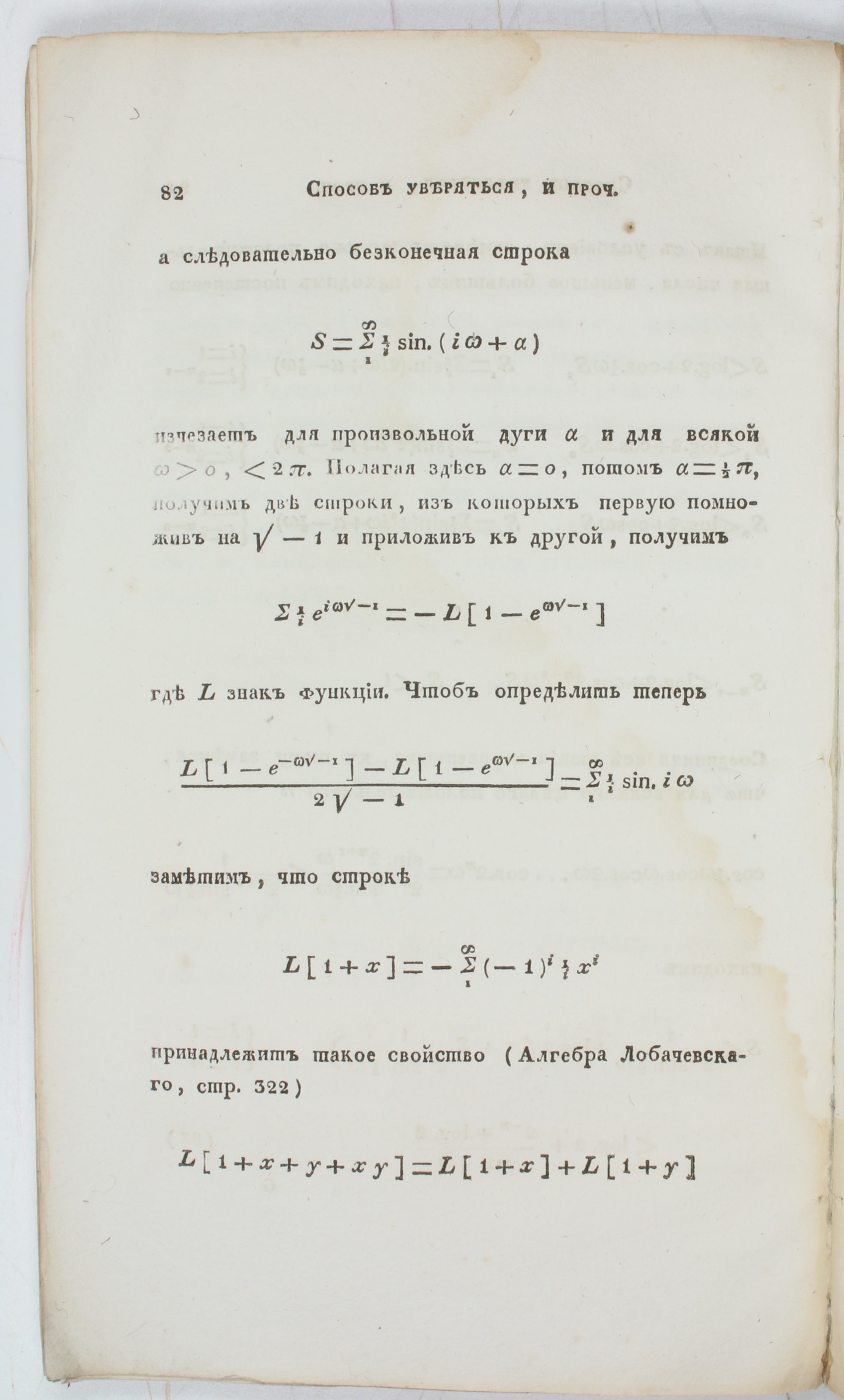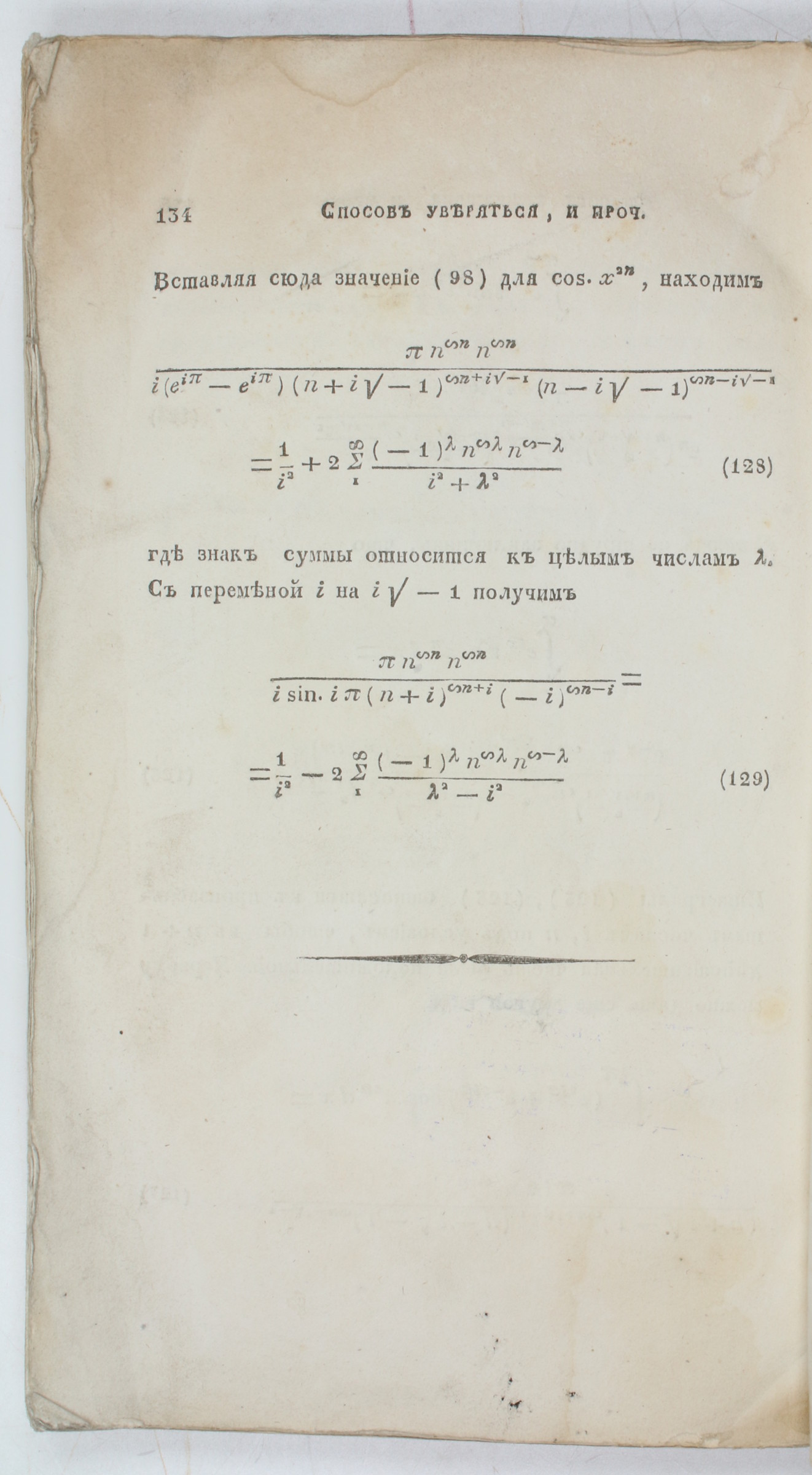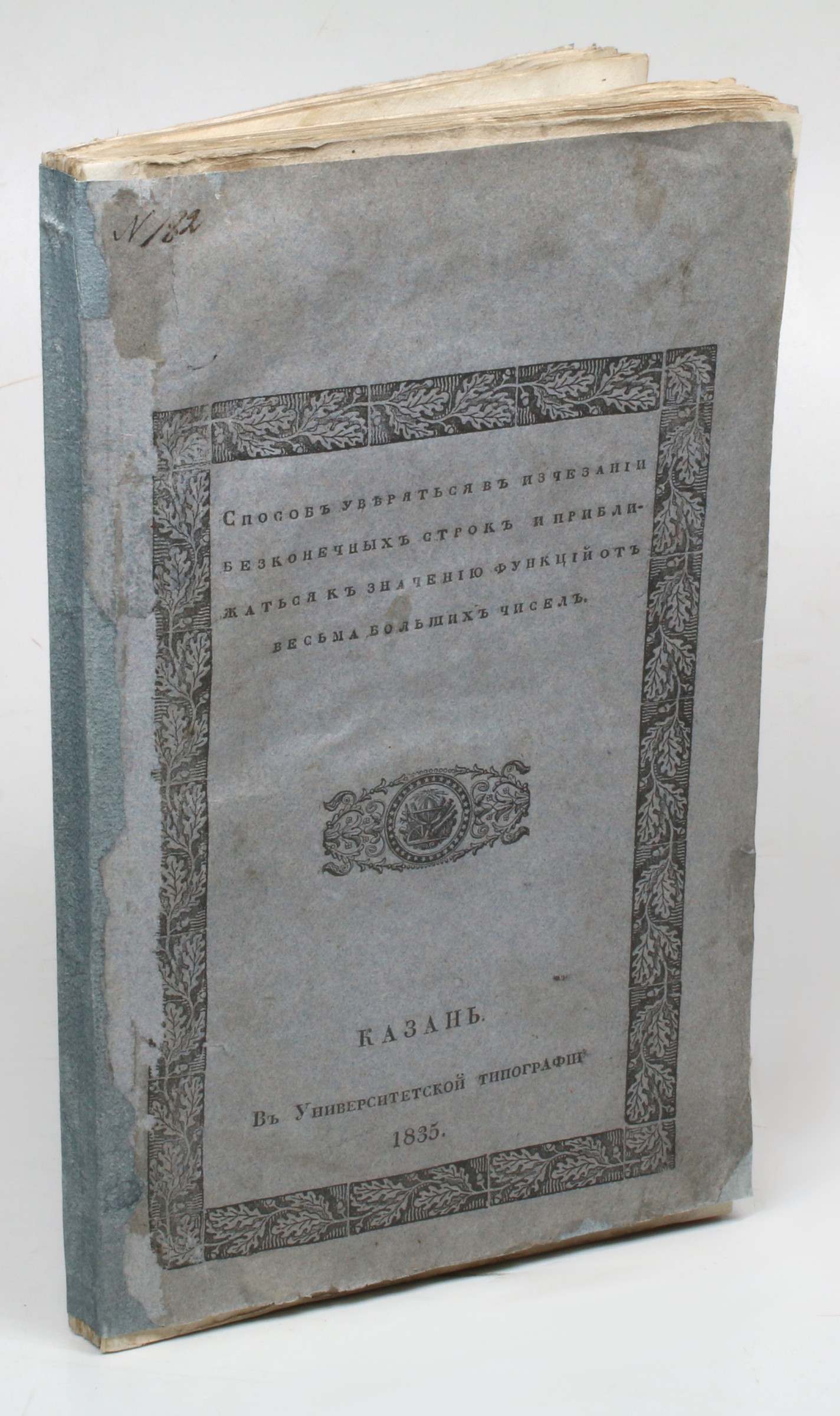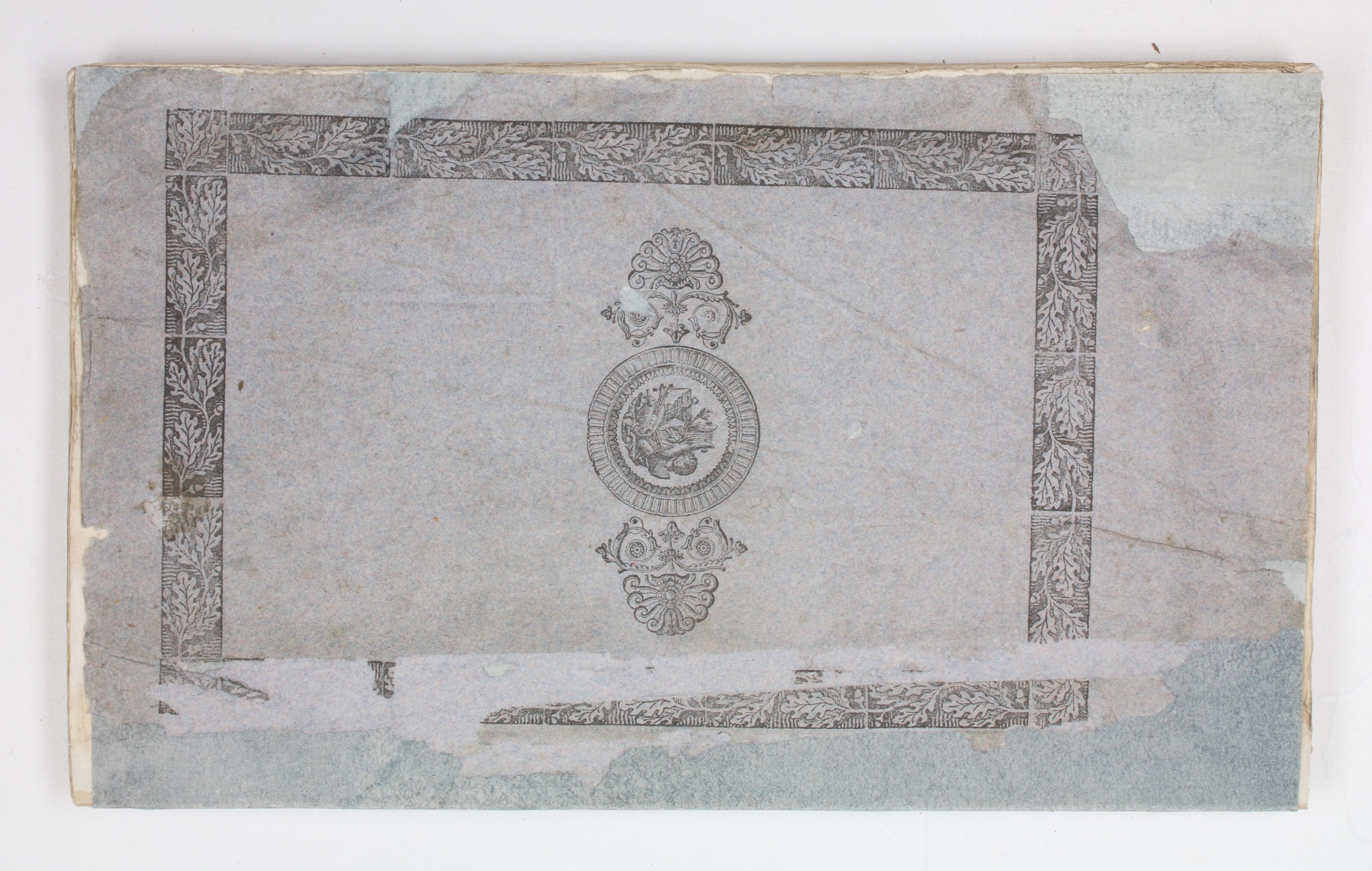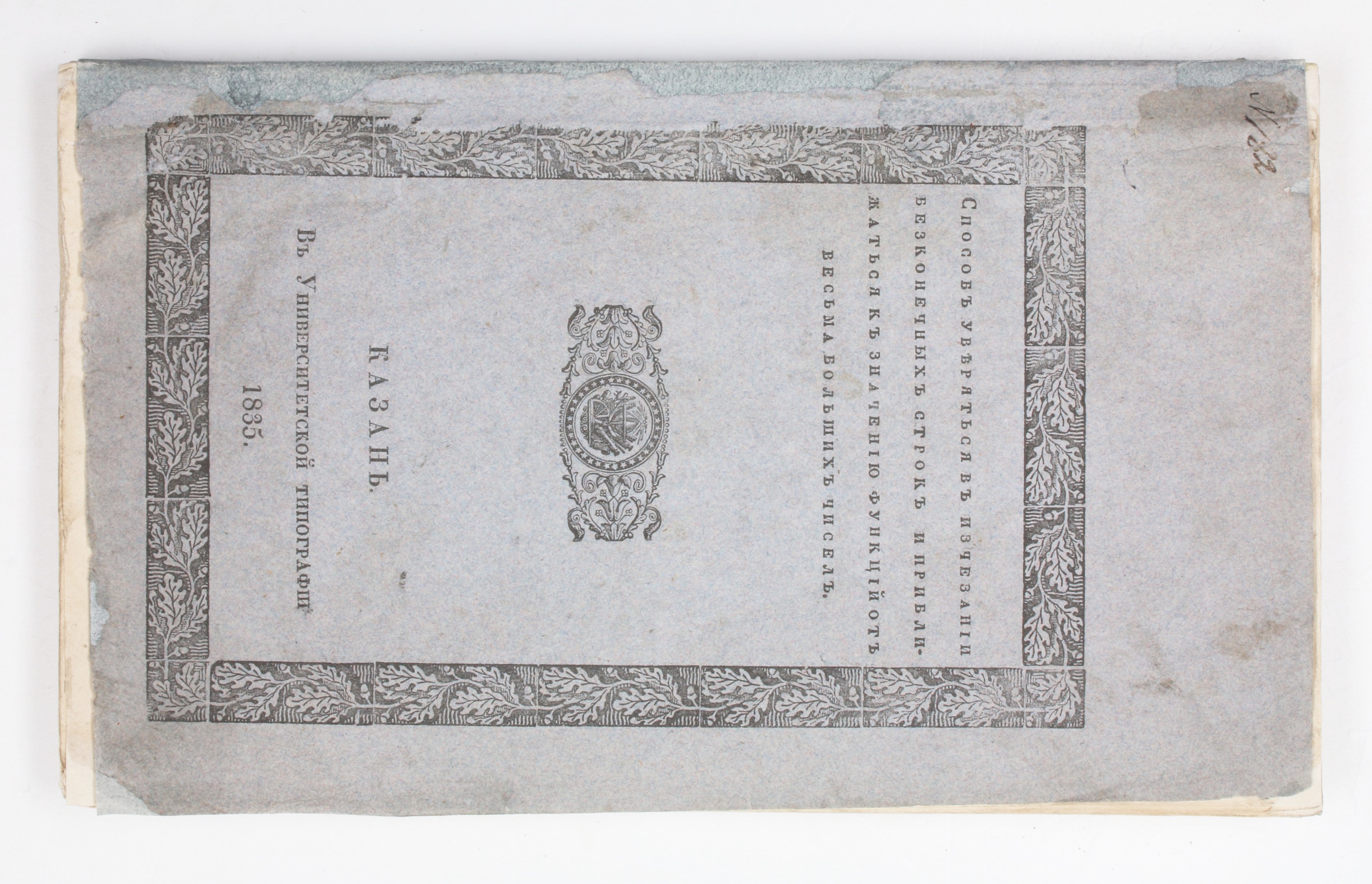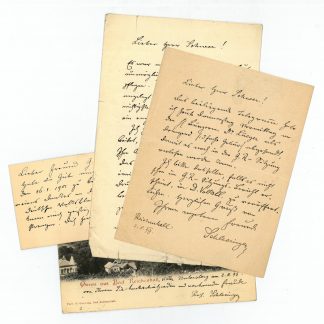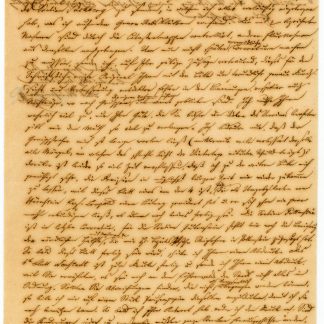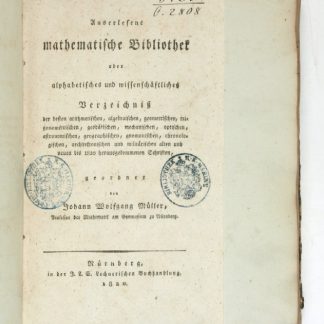Exceptionally rare offprint
Sposob uviersit'sia v izchezanii bezkonechnykh strok i priblizhat'sia k znacheniiu funktsii ot ves'ma bol'shikh chisel [A method for ascertaining the convergence of infinite series and for obtaining approximate values of functions of a large number of variables].
8vo. 134 pp., final blank leaf. Original printed wrappers with printed title enclosed in decorative border.
€ 35,000.00
First separate printing: exceptionally rare offprint of this important essay on the foundations of calculus and real analysis by the first inventor of non-Euclidean geometry. "As early as 1835, Lobachevsky showed in [this] memoir the necessity of distinguishing between continuity and differentiability" (Cajori).
Lobachevsky's works in other areas of mathematics were either directly relevant to his geometry (as his calculations on definite integrals and probable errors of observation) or results of his studies of foundations of mathematics (as his works on the theory of finites and the theory of trigonometric series). "The mathematicians of the 18th century did not touch the question of the relation between continuity and differentiability, presuming silently that every continuous function is eo ipso a function having a derivative. Ampère tried to prove this position, but his proof lacked cogency. The question about the relation between continuity and differentiability awoke general attention between 1870 and 1880, when Weierstrass gave an example of a function continuous within a certain interval and at the same time having no definite derivative within this interval (non-differentiable). Meanwhile, Lobachevski already in the thirties showed the necessity of distinguishing the 'changing gradually' (in our terminology: continuity) of a function and its 'unbrokenness' (now: differentiability). With especial precision did he formulate this difference in his Russian Memoir of 1835: 'A method for ascertaining the convergence, etc.'. A function changes gradually when its increment diminishes to zero together with the increment of the independent variable. A function is unbroken if the ratio of these two increments, as they diminish, goes over insensibly into a new function, which consequently will be a differential-coefficient. Integrals must always be so divided into intervals that the elements under each integral sign always change gradually and remain unbroken" (Halsted, p. 242). This work includes an extensive discussion of infinite series, including a new convergence criterion, now known as "Lobachevsky's test". Much space is also devoted in this memoir to definite integrals, prompted by the computation of areas and volumes in Lobachevskian geometry. One year later, Lobachevsky devoted a whole memoir to this subject.
Wrappers wrinkled; some damage to border on lower cover; spine and corners professionally restored with like paper. Chipped corners of title-page remargined; interior shows creasing with occasional light waterstains to margins. Exceptionally rare, as are all of Lobachevsky's Kazan publications, even in Russian collections: OCLC lists the Harvard copy only.
Cajori, History of Mathematics, S. 421. Halsted, "Biology and Mathematics", 12th Annual Report of the Ohio State Academy of Science (1903), S. 239-247. OCLC 84296869.



